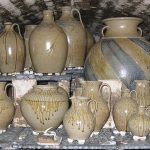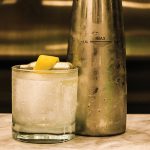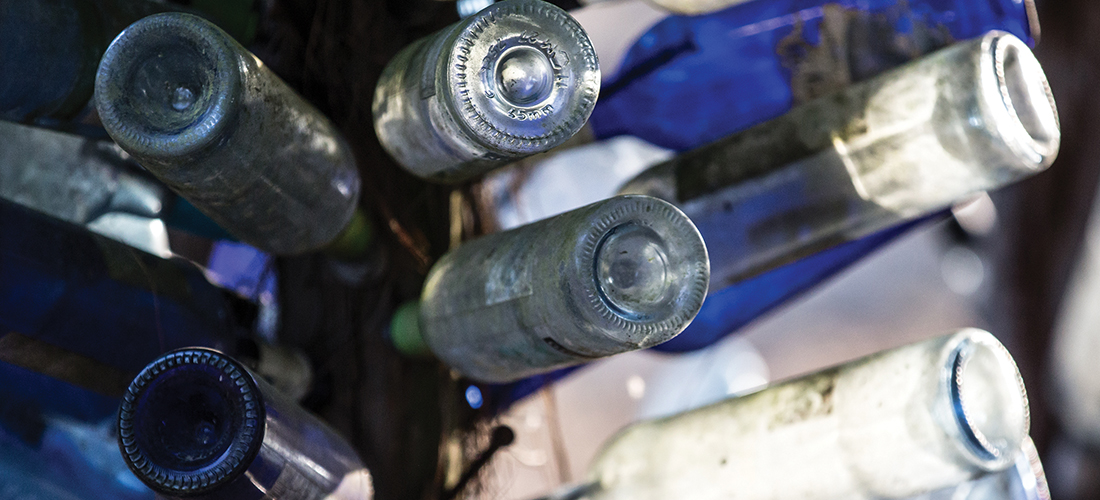
Poor man’s stained glass comes of age
By Susan McCrimmon • Photographs by Laura Gingerich
Are they trash recycled as art? Does your heart soar when one is spotted tucked back into some shrubbery? Does your nose wrinkle with distaste at the gaudy display? Love ’em or hate ’em, glass containers emptied of their various and sundry contents — liquid medicines, soft drinks, vinegar, beer, syrups, hard liquor — all have been transformed into an art form, the Pietà of salvage, the bottle tree.
A splash of color in the corner of the garden or a note of whimsy as the garden’s focal point, there is no denying a bottle tree’s impact. There are no formulas, no blueprints, no set rules governing construction or design. Bottle trees are limited only by one’s imagination, creativity or pocketbook. The “poor man’s stained glass” can be constructed from a variety of materials. The most current manifestation can be purchased and installed in short order. Metal “trees” made from rebar or similar material are placed in the desired location and the chosen bottles are inverted onto the tree “limbs” to complete the look. Easy peasy. The more traditional bottle trees take a little more effort. If one is lucky, a dead cedar tree or crape myrtle, in the right location, works great. Cedars and crape myrtles are traditionally associated with bottle trees, although anything with good limb structure will work. Just trim the limbs as needed and place saved bottles as your artistic muse dictates.
Otherwise, a strategically positioned post or tree trunk may be your best option. Some people drill holes and pound wooden dowels at an angle into the post or tree trunk to support the bottles. I prefer to hammer in 20-penny nails. Relatively inexpensive, they can be easily moved for creative effect. To finish, simply add the collected bottles. They can be a wide variety of shapes and colors or just one specific type or one specific color. The possibilities are endless.
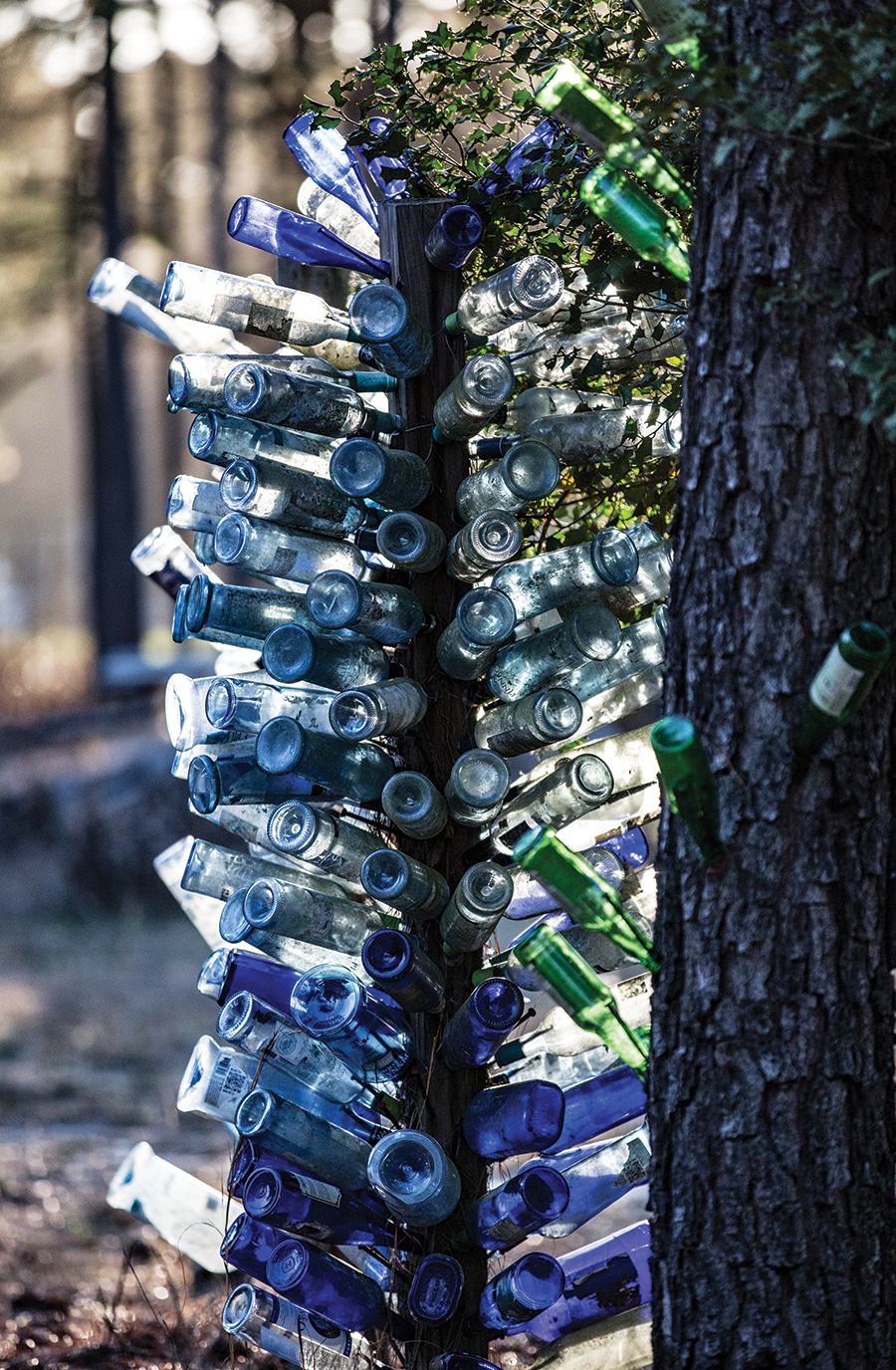
Bottle trees have spiritual, cultural and aesthetic significance in history and garden design. Glass was first discovered in northern Africa about 3500 B.C. Glass bottles appeared in Egypt and Mesopotamia around 1600 B.C. It’s possible that the Arabic folk tale of the genie in Aladdin’s lamp is the first instance of bottles being used to capture spirits, pre-dating the common conception of bottle trees originating in the Congo during the ninth century where empty glass bottles were placed around entryways in order to ensnare evil spirits which then would be destroyed by sunshine. Wind blowing across the bottles was the sound of spirits trapped inside moaning to be released. At the same time in the Congo, tree altars were erected to honor dead relatives. Plates attached to trees or sticks would be placed around the gravesite as a memorial. The plates were thought to resemble mushrooms. The Congolese word for mushroom was similar to their word for love. See a mushroom . . . think of love. Earth from the gravesite would be placed in bottles and they would be hung by the neck from low limbs of a tree. These bottles would emit a tinkling sound in a breeze, possibly the beginning of wind chimes. The two concepts began to merge into the bottle tree.
The color of choice for bottle trees has predominantly been cobalt blue. Cobalt blue is universally accepted for relaxing and calming the spirit and has historically been associated with spirits, ghosts and haints. Blue bottles have been found on shipwrecks from the Minoans dating as far back as 2700 B.C. The most widespread means of adding blue color to glass was using the element cobalt, thus the name. The term cobalt is Greek in origin by way of medieval Germany. When smelting silver, the cobalt metal embedded in the silver ore could interfere with the process and cause respiratory issues. As early as 1335, “Kobald” referred to gnomes or spirits afflicting the silver miners. The association stuck. The word for troublesome spirits became associated with the main way of getting blue color into glass that was then used in bottle trees to capture evil spirits. Cobalt blue was the preferred color of Voodoo tradition. This color of the sky and water was a crossroads of heaven and Earth, the living and the dead, and creative and destructive spirits.
The esteemed Southern writer Eudora Welty believed that place is what makes a story appear real, because with place come associations, customs and feelings. In the short story “Livvie” she writes:
“Out front was a clean dirt yard with every vestige of grass patiently uprooted and the ground scarred in deep whorls from the strike of Livvie’s broom. Rose bushes with tiny blood-red roses blooming every month grew in threes on either side of the steps. On one side was a peach tree, on the other a pomegranate.
“Then coming around up the path from the deep cut of the Natchez Trace below was a line of bare crape-myrtle trees with every branch of them ending in a colored bottle, green or blue.
“There was no word that fell from Solomon’s lips to say what they were for, but Livvie knew that there could be a spell put in trees, and she was familiar from the time she was born with the way bottle trees kept evil spirits from coming into the house — by luring them inside the colored bottles, where they cannot get out again.
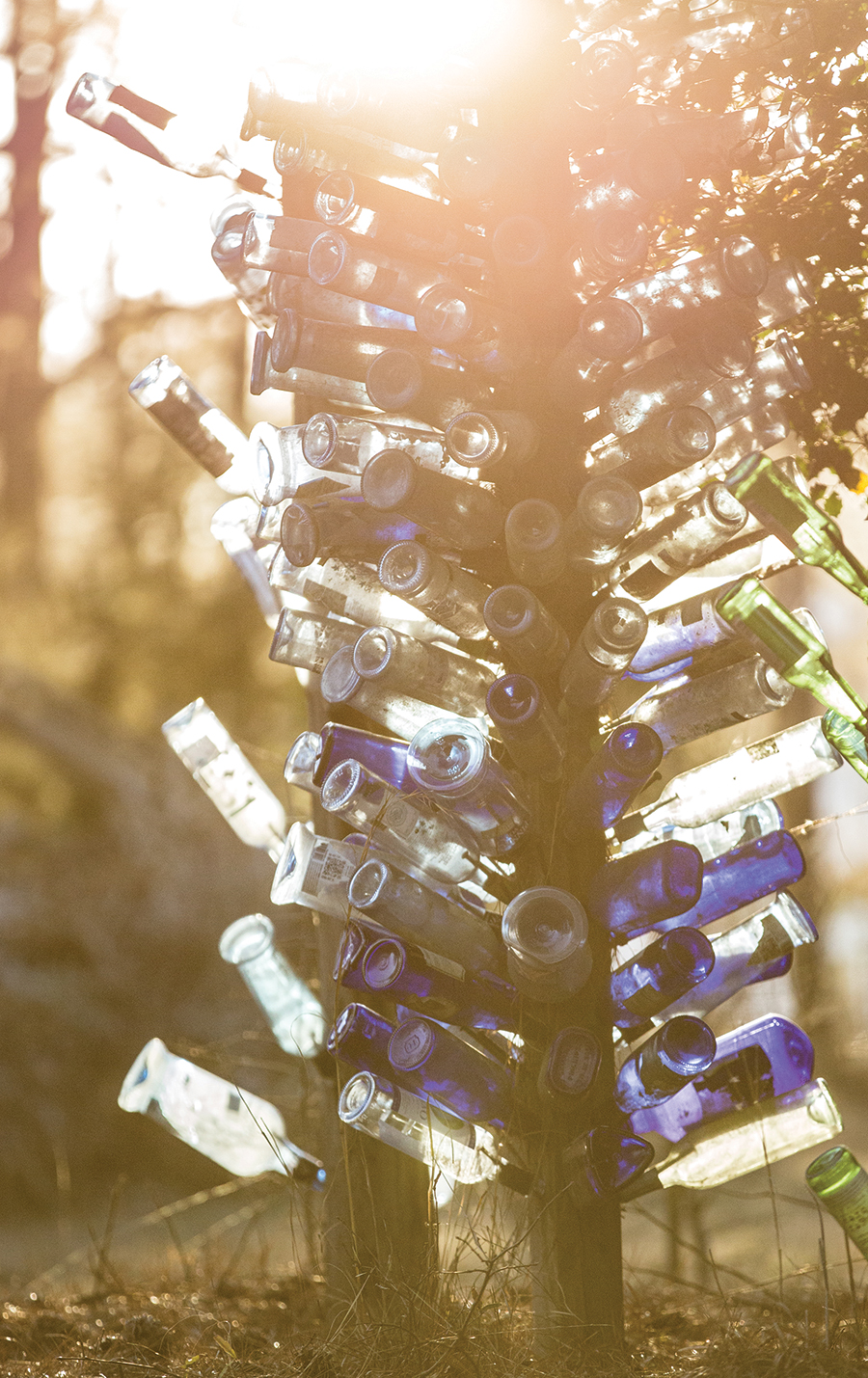
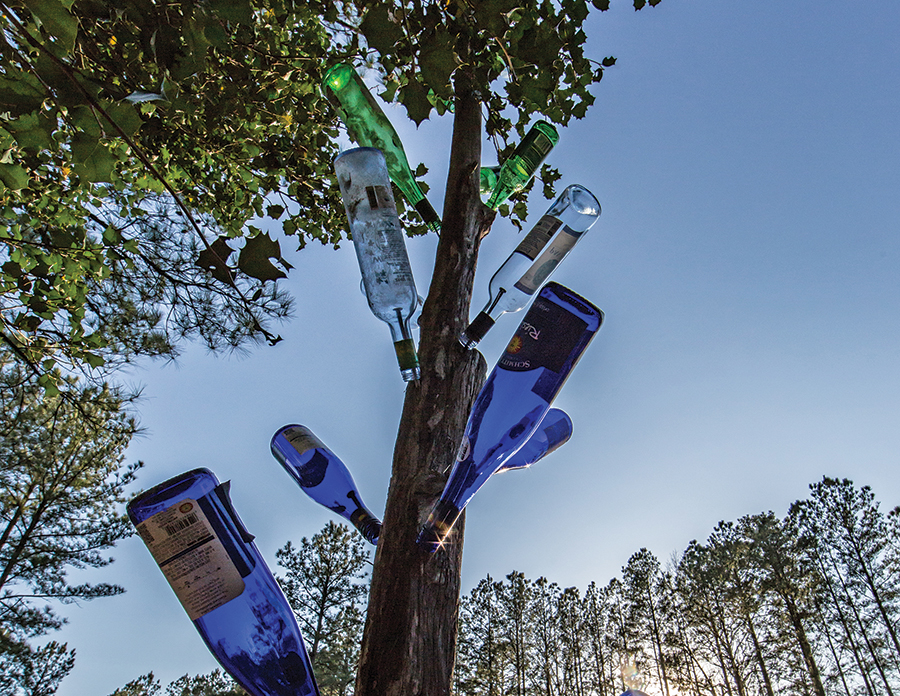
“Solomon had made the bottle trees with his own hands over the nine years, in labor amounting to about a tree a year, and without a sign that he had any uneasiness in his heart, for he took as much pride in his precautions against spirits coming in the house as he took in the house, and sometimes in the sun the bottle trees looked prettier than the house did . . . ”
My first two bottle trees came about due to my mother’s illness. She was a died-in-the-wool Southern iced tea drinker. Every day. If there wasn’t a pitcher of tea already in the fridge, it was being brewed on the stove. One of the manifestations of her illness was that it altered my mother’s drinking habits. She no longer wanted tea but began to drink Coke. Not any Coke, mind you, but it had to be the ones in the 6-ounce bottles. We bought them by the case. I began to store the small greenish bottles with the distinctive red labels. When I thought enough had been gathered, I dug a hole near a large camellia bush, beat in the nails, and erected this rather odd memorial to my mother. During the many months of her illness, almost every evening was passed with friends and family murmuring words of support while sitting on Mom’s screened-in porch. At times, alcohol was the crutch used to help numb the pain. My second bottle tree was born as a memorial to those evenings. The current count is six . . . and growing.
Regardless of your color choice, be it blue, green, brown, clear, red or any array of color choices for your garden addition, remember its long tradition of keeping bad things away. No one can feel bad from something that brings one such joy. PS
Susan McCrimmon is a noted science geek, Suduko and crossword addict and is rumored to be besotted by words…and bottle trees.

